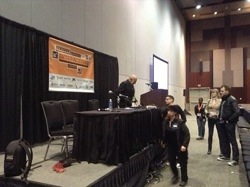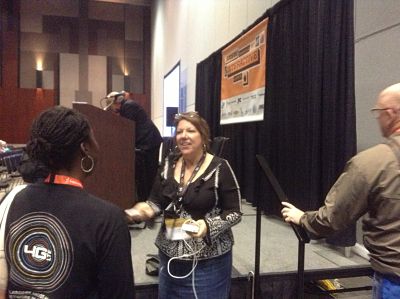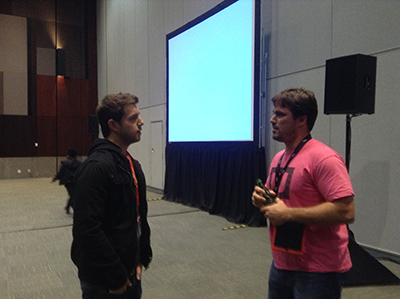Let’s talk about change.
That’s exactly what Dr. Mario Garcia says we absolutely must do at SXSW Interactive: talk about how we in the media industries adapt to change.

Founder and CEO of Garcia Media, Garcia joined the Poynter Institute’s Sara Quinn and Smart Media Creative’s Dave Stanton Friday on a panel exploring recent studies on the way people read and engage with news publications on tablets.
Garcia kicked off the panel with his study titled Storytelling in the Age of the Tablet. He pointed out that we live in a multimedia age, and news publications are now engaging audiences on four platforms: smartphones, websites, print and tablets.
Smartphones and news websites are what he calls “lean forward” platforms, which readers use throughout the day to check for breaking news updates and current events. Print publications and tablets, on the other hand, are “lean back” platforms used during leisure times for deeper reading and engagement.
Garcia’s study, “Storytelling in the Age of the Tablet,” examined user preferences in tablet news design. He says, especially for established newspapers and magazines, the first 10 seconds a user is engaging with a tablet edition are vital to the product’s success.
“The first 10 seconds are very important because you get to establish a connection between the product and the brand, which is already familiar,” he says.
He emphasized the idea of creating a multi-sensory experience. In tablet design, he says, you are designing for the eye, the ear, the brain and the finger. He says tablet content needs to include lots of multimedia (photos and videos are great), but just as important is what he called “pop up” experience.
That’s the user expectation of something happening when part of the screen is touched. You touch an image and want it to expand to a slideshow or play a video. That’s designing for the finger.

Quinn and Stanton also discussed their recent Poynter Institute study using eyetracking technology to quantitatively analyze how users engage with tablet editions of news publications.
Based on their findings, designers should consider photo navigation layout (like Pinterest or the SXTXState home page), clear headlines and description content to help users decide which stories to read and touch-activated selection tools for users who touch the screen as they read.
One attendee asked if their study had any implications for advertising, which Quinn said was a particularly interesting question to her. She says the marriage of advertising and editorial should be top of mind in this area, and she wants to test how users interact with ads depending on placement, interactivity and gamification.
They also found that the average point at which a user stopped reading and navigated away from a story, what they called the “bail out point,” was about 80 to 90 seconds. Garcia pointed out this finding has implications not only for design but also for the way we write news.
Garcia says tablet news stories should be written in “layers” rather than use the traditional inverted pyramid model of news writing. This, he says, will cater to both scanners, readers who read a headline and a few sentences before bailing out, as well as those who will spend more time on a single story.

With such a great divide between what users look for in a tablet news experience versus a news website, a shift to all responsive design seems unlikely in the near future. Stanton, a major proponent of responsive design, says some of the study’s findings could indicate some challenges for such a move.
Garcia says responsive design is in its infancy and is mostly used to streamline development (reduce cost by eliminating the need for native apps when practical). He says its capabilities have not been fully explored.
“We are in the 1.0 version of responsive design,” he says. But he is confident developers are advancing toward a generation of responsive design that will accommodate the peculiarities of each platform.
